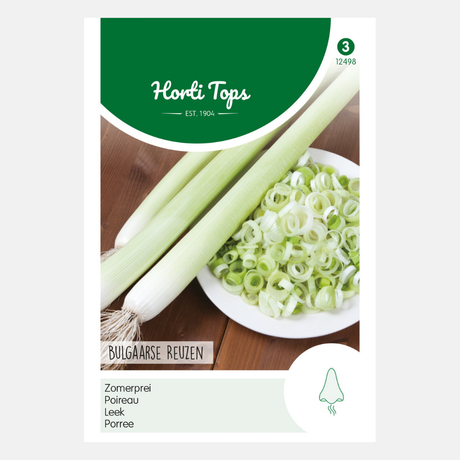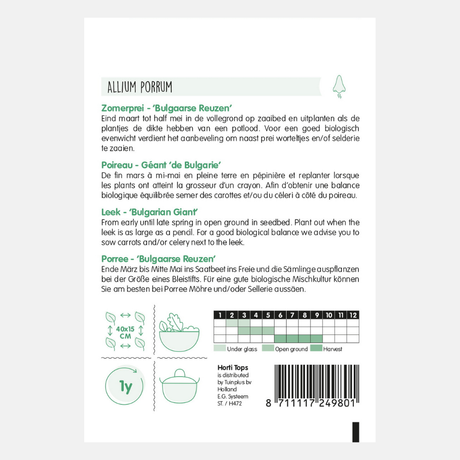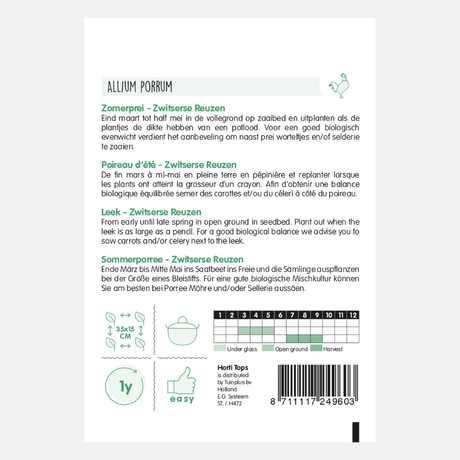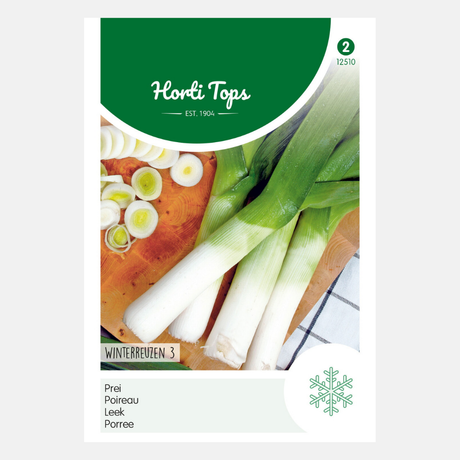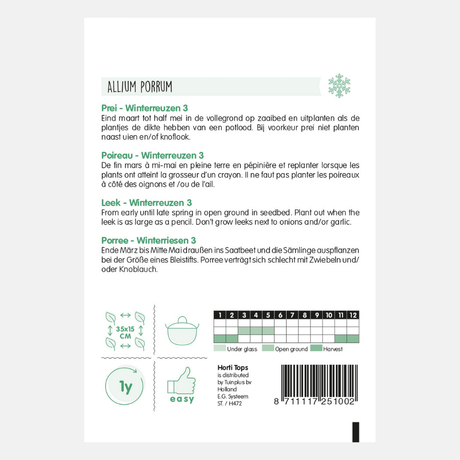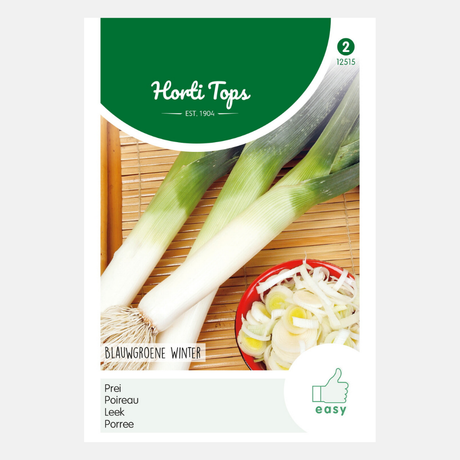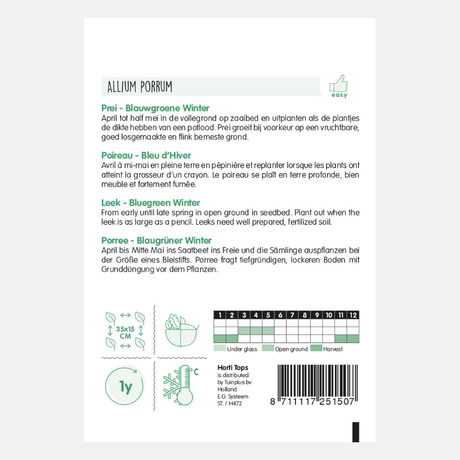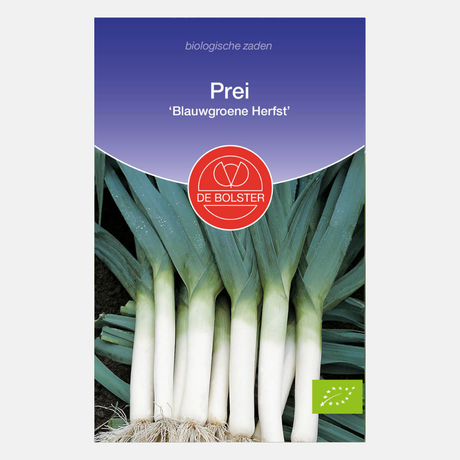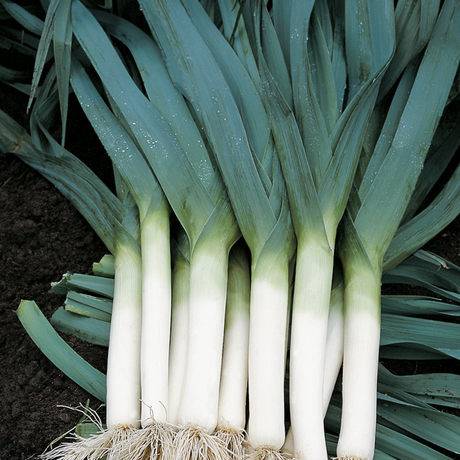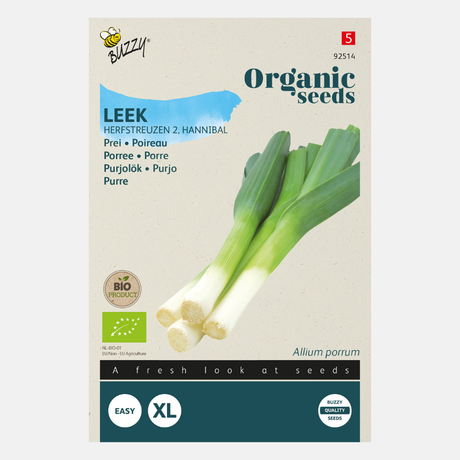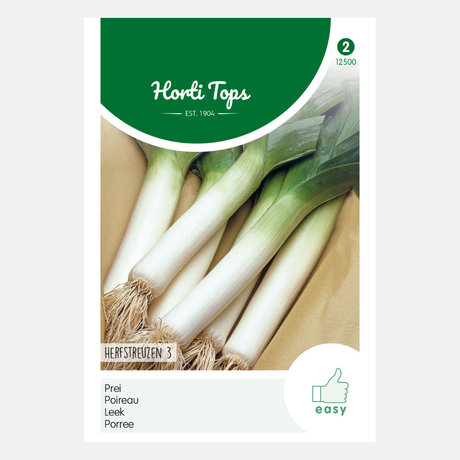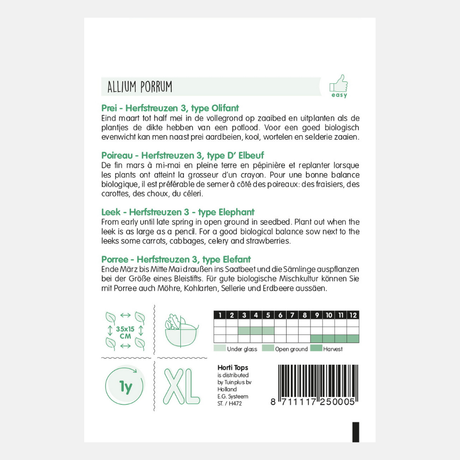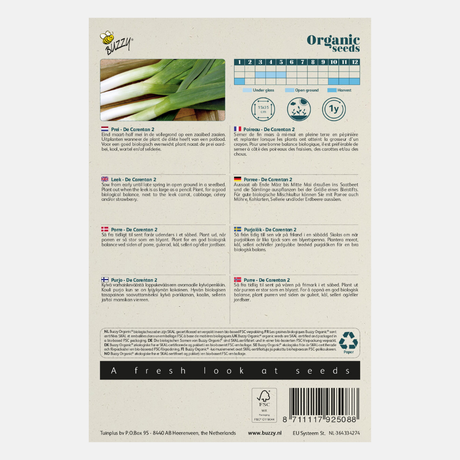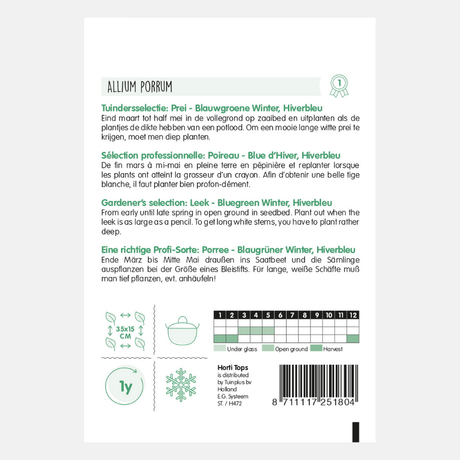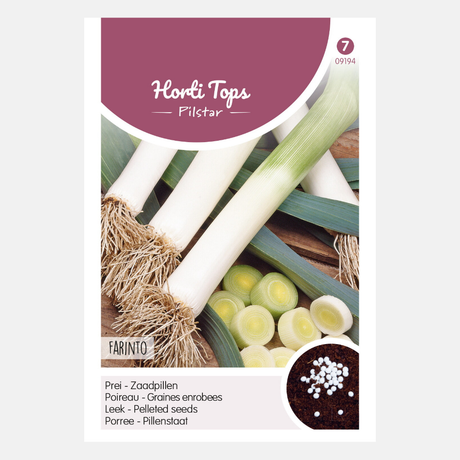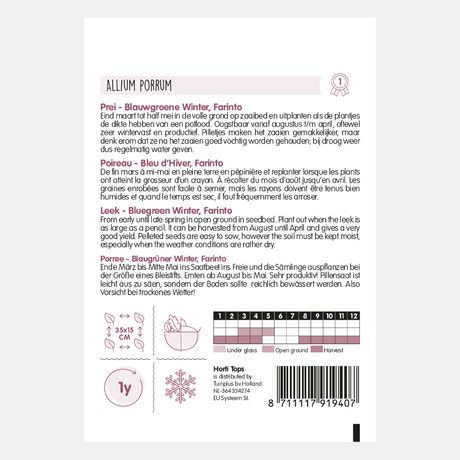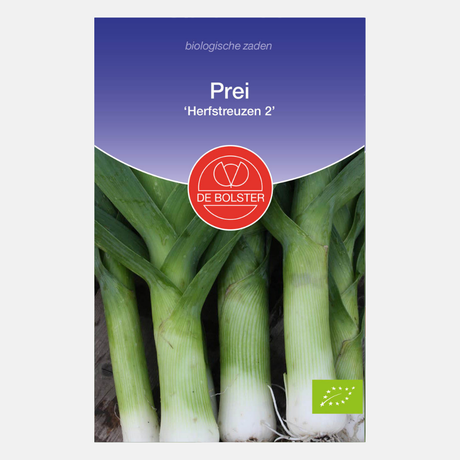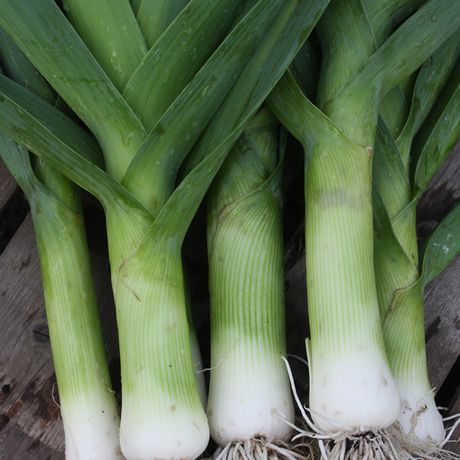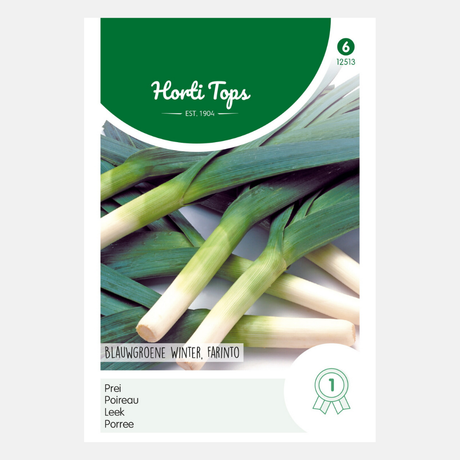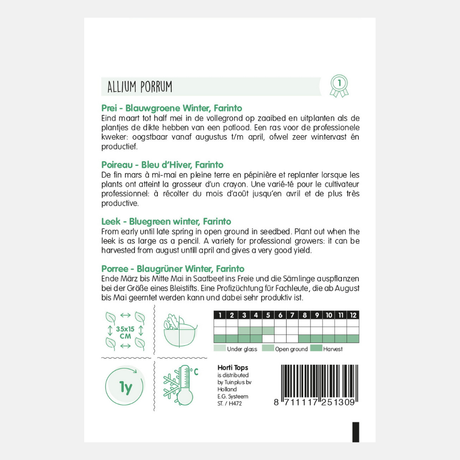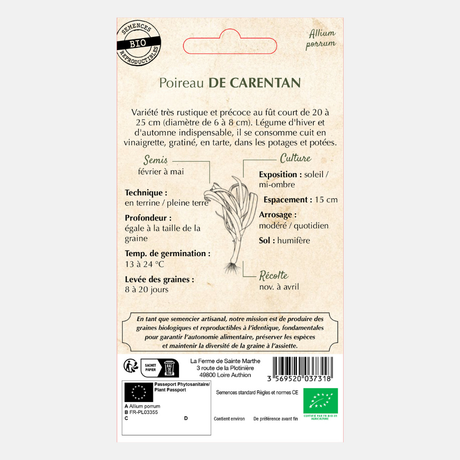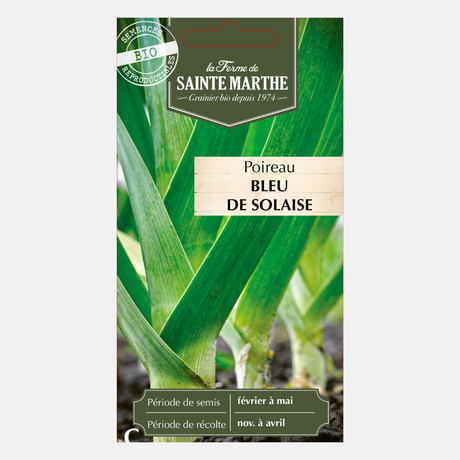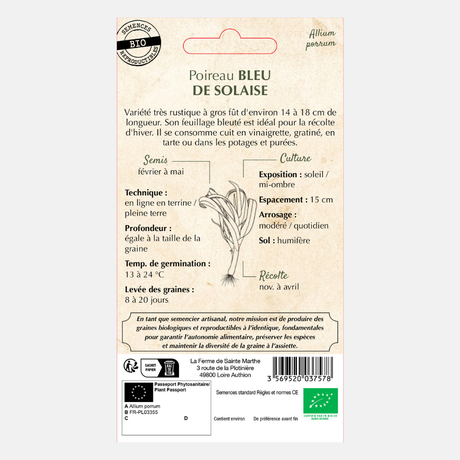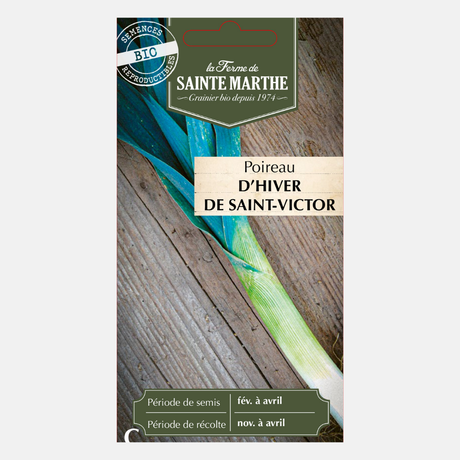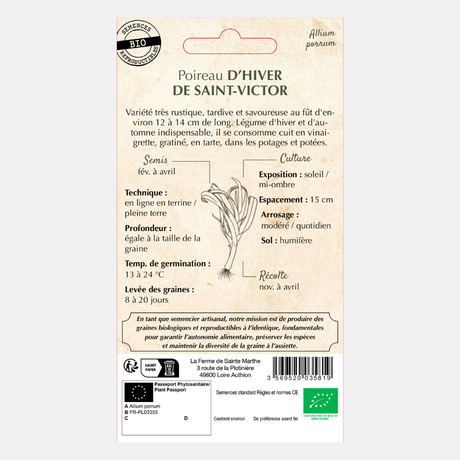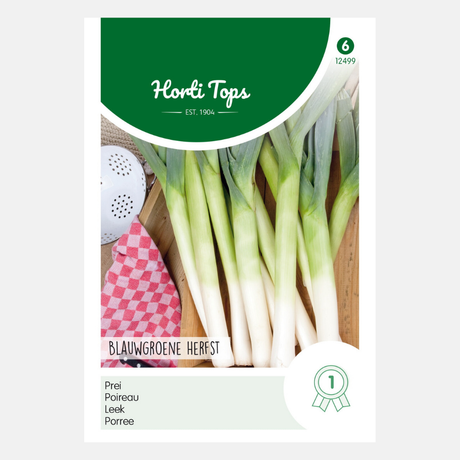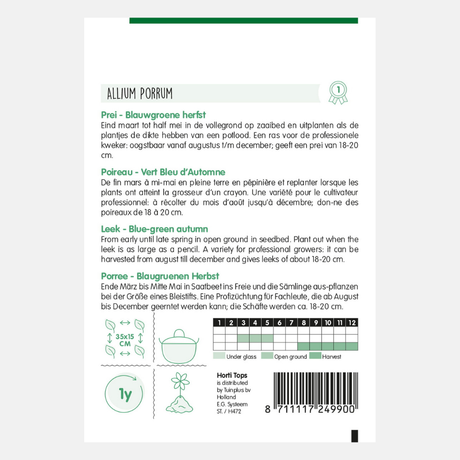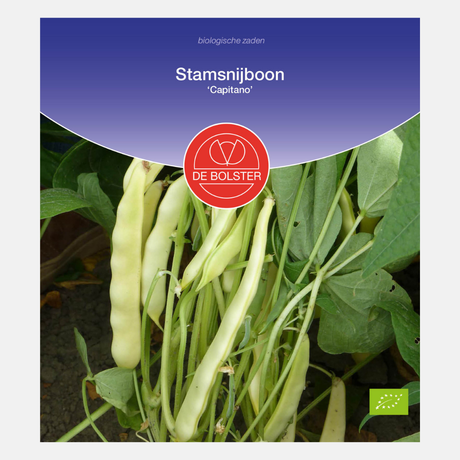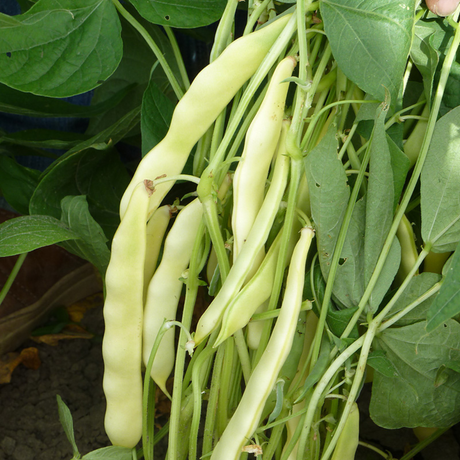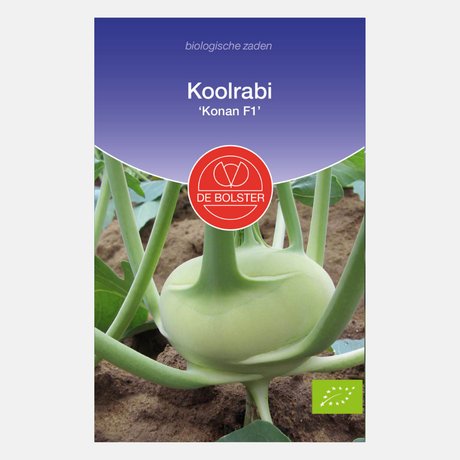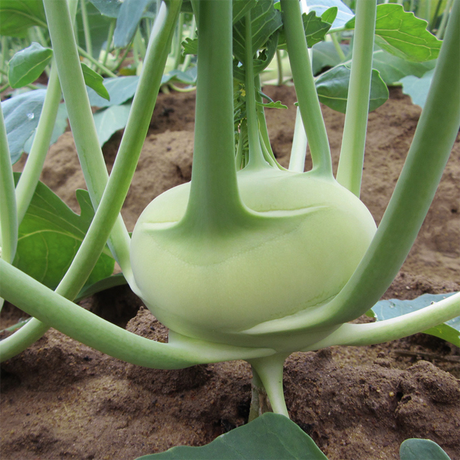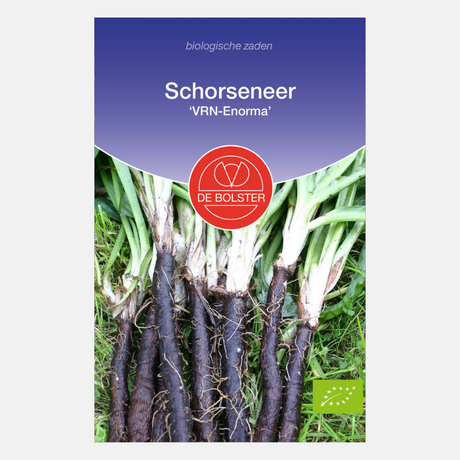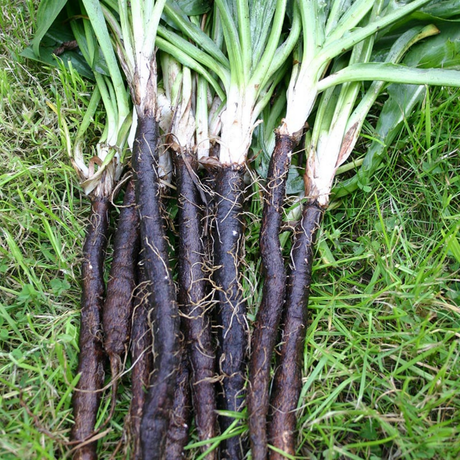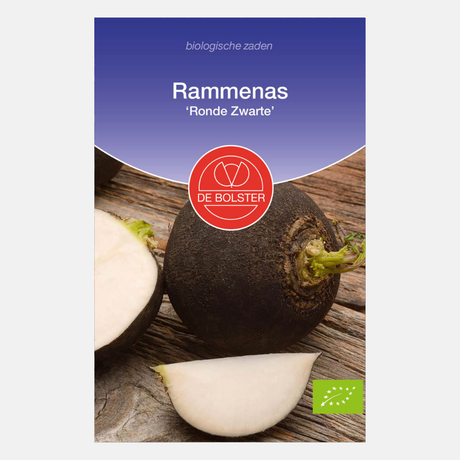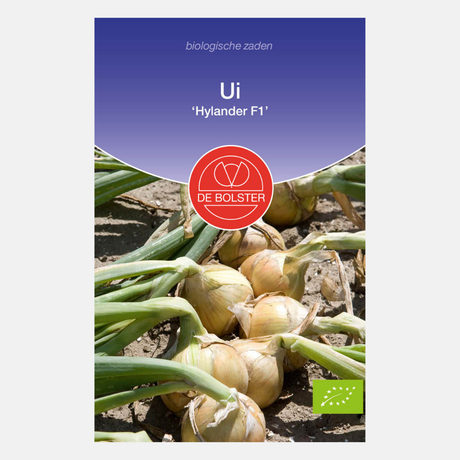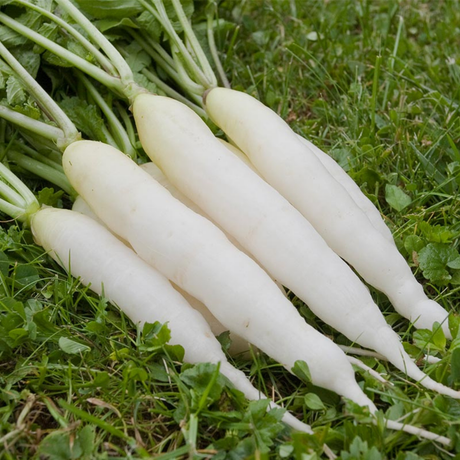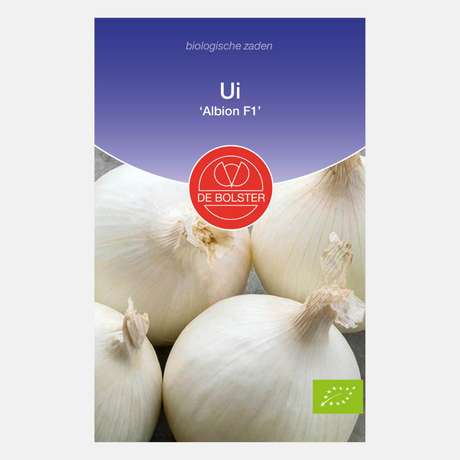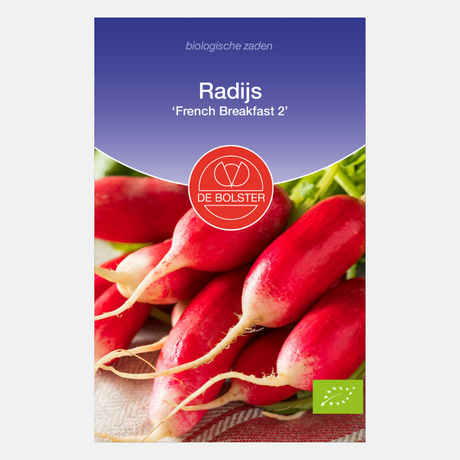Leek 'Bulgarian Giants' - summer leek
€2,23Unit price /UnavailableLeek 'Swiss Giants' - summer-early autumn
€2,23Unit price /UnavailableLeek 'Winterreuzen 3' - Brabant type
€1,84Unit price /Unavailable- €1,84Unit price /Unavailable
- €2,96Unit price /Unavailable
Leek 'Herfstreuzen Hannibal' BIO
€3,52Unit price /UnavailableLeek 'Herfstreuzen 3' - elephant type
€1,84Unit price /Unavailable- €2,93Unit price /Unavailable
Leek 'Blue-green Winter - Hiverbleu'
€2,23Unit price /UnavailableLeek 'Blue-Green Winter - Farinto' - pilled seed
€4,91Unit price /Unavailable- €2,96Unit price /Unavailable
Leek 'Blue-green Winter - Farinto'
€3,91Unit price /UnavailableSummer leek 'Carentan 2' BIO seeds
€3,23Unit price /UnavailableWinter leek 'Blue de Solaise' BIO
€3,23Unit price /Unavailable- €3,67Unit price /Unavailable
Leek 'Blue-green Autumn - Ideal'
€3,91Unit price /Unavailable
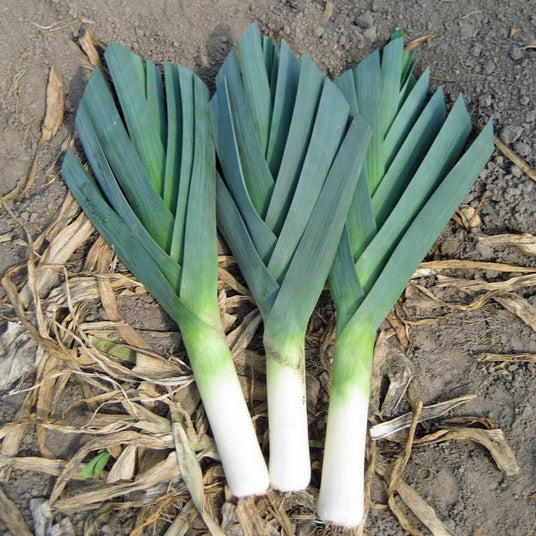
Growing guide: Growing leeks in 3 seasons: Summer, autumn and winter 13 growing tips
Share information about your brand with your customers. Describe a product, make announcements, or welcome customers to your store.
Growing leeks in pictures
Watch this (old) video to see how Tom grows leeks - from sowing leeks to harvesting leeks
Other vegetable seeds
View allBuy leek seeds: grow your own sturdy stems
With the right leek seeds, you lay the foundation for a harvest full of flavor and healthy vegetables. It's important to choose the right seeds at the beginning of the growing season to ensure a good start and a successful crop. Leek seeds are the small black seeds of the leek plant. Leeks belong to the allium family and have a milder flavor than regular onions. We select seeds solely for their vigour, germination rate, and resistance to cultivation—so you can sow and harvest with confidence. A packet of leek seeds is suitable for approximately 10 square meters, which is ideal for an average vegetable garden.
Introduction to leek seed
Leek seeds are truly the best way to start growing delicious leeks in your vegetable garden. You can choose from all sorts of varieties—spring leeks, winter leeks, or even organic leeks—and then you'll have fresh leeks from your own garden all year round (and they taste so much better than store-bought!). Sowing them does require some attention: the temperature needs to be right, and the soil needs to be nice and loose and moist. But don't be too fussy—just feel the soil with your hands to make sure it's firm. For an early harvest, leek seeds can be sown indoors in pots or seed trays starting in January. Summer leeks are sown indoors from mid-January to the end of February. Leek seeds can be pre-sown in early spring in a seed tray or directly into the ground. Depending on which leek you want to grow, you can tailor the sowing and care to the season and your own schedule. Leek seeds usually germinate within 10-14 days, so you won't have to wait long to see the first signs of growth. With a little preparation and care, you can enjoy this handy vegetable from your own garden all year round. When choosing your leek seeds, simply consider when you want to harvest and the condition of your garden – that way you'll always get the best results and be proud of your home-grown leeks.
Why sow leek seeds?
- Leeks are versatile and often available from August until deep into winter.
- Homegrown leeks are fresher and more flavorful than store-bought varieties.
- By sowing you maintain control over the variety, cultivation method and soil quality.
- Keep in mind that leeks grow slowly, so growing them requires patience. Leeks have a long growing season of about three months before they can be harvested.
- Autumn and winter leeks are most suitable for the Dutch climate.
- When young leek plants are 5 cm tall, they should be thinned out to a distance of 5 cm.
- You may want to take additional steps, such as protecting leeks from severe frost or improving the soil, depending on the circumstances.
- Earthing up helps to give the leek a long, white harvest section and prevents the stem from turning green.
Which leek seeds and varieties are popular?
We offer varieties for summer leeks, autumn leeks, and winter leeks. For summer, we offer leek seeds that grow quickly and can be harvested early. Consider varieties like Bulgarian Giants , an excellent variety for autumn cultivation due to its high yield and robustness, and Bluegreen Winter , an excellent variety known for its hardiness and reliability during winter cultivation. Winter leeks can overwinter in the garden and are harvested well into spring. Late-season leek varieties can remain in the ground all winter and become sweeter after a light frost. Suitable winter leek varieties are Bluegreen Winter and Winter Giants 3 .
Options for organic leeks
If you choose organic leek seeds, you're choosing a healthy and natural growing method that simply works well. Your organic leeks grow without artificial fertilizers or chemical pesticides, so you can be sure you'll end up with a pure and flavorful vegetable. Organic leek seeds are eco-certified. There are several types of organic leek seeds you can try, such as the popular blue-green winter leek, 'Blue-Green Autumn', and 'Herfstreuzen 2'. These varieties are known for their excellent growth and delicious flavor and are perfect if you want to grow leeks naturally. Organic leek seeds are suitable for the conscious gardener. Ensure good soil structure and sufficient moisture, and you'll lay the foundation for a beautiful harvest of healthy leeks. Leeks love plenty of sun and should be planted in the sunniest spot in the garden, where they receive at least 6 hours of sun per day. Use your organic leeks in soups, stews, or as a seasoning in all kinds of dishes, and enjoy a vegetable grown with love for nature.
Tips for sowing and growing leek seeds
- Leek seeds can usually be sown directly outdoors in the ground from late March onwards; leek cultivation is not usually started under glass.
- Prepare a seedbed by loosening the soil and keeping it weed-free before sowing the leek seeds.
- Sow indoors from February or March; prick out once the seedlings are the thickness of a pencil.
- Sow the leek seeds about 1 cm deep and keep a distance of 10 cm between the seeds.
- When planting, ensure sufficient spacing: leave 15 centimeters between plants and 45 centimeters between rows, so the leeks have enough room to grow and weeds have less chance. When planting, maintain a spacing of 40 x 15 cm.
- Sowing depth: 0.5 to 1 cm in moist, airy soil.
- When transplanting: use deep furrows of 15–20 cm, place the plant in them and work the soil in—you can later top up the soil to extend the white shaft.
- After about ten to twelve weeks, leek plants can be planted out in the open ground.
- Make sure that the young plants can root well after prickling out for strong growth.
- Tip: Are you unsure about the right time to sow leek seeds or the right distance when planting them out?
Care tips
- Keep the soil evenly moist, especially during dry periods.
- Provide well-drained, fertile soil so that the leeks can develop well.
- Fertilize with nitrogen-rich compost, but avoid fresh manure, which attracts pests.
- During growth, the soil should be regularly fertilized with nitrogen-rich fertilizer.
- Crop rotation is crucial: avoid growing leeks after onions or garlic.
- Protect against pests such as leek fly or moth with netting or covering when necessary.
- Protect leeks from frost by grouping the plants together or covering them in low temperatures so that they can withstand cold temperatures.
- Leeks need a lot of water during the entire growing period.
- If necessary, you can take additional care measures, such as improving the soil or covering the plants in extreme temperatures.
- The soil around the plant should be topped up regularly.
- Weeding is important to ensure that the leek plants get enough light, water and nutrients.
Harvesting & storing
- Harvest when the stems reach the thickness of a pencil—usually from August to later in the season.
- You can recognise ready-to-harvest leeks by their firm, fresh green leaves that grow nicely apart.
- Carefully pull up the leek with a spade or fork to avoid damaging the roots.
- After harvesting, leeks can be used in various ways, for example as an aromatic vegetable in soups, stews or casseroles.
- Harvest leeks any time they are large enough to eat.
- Store dry and cool, and use the green leaves in soups or stews.
- Want to enjoy fresh leeks again next season? You can easily order new leek seeds through our webshop.


